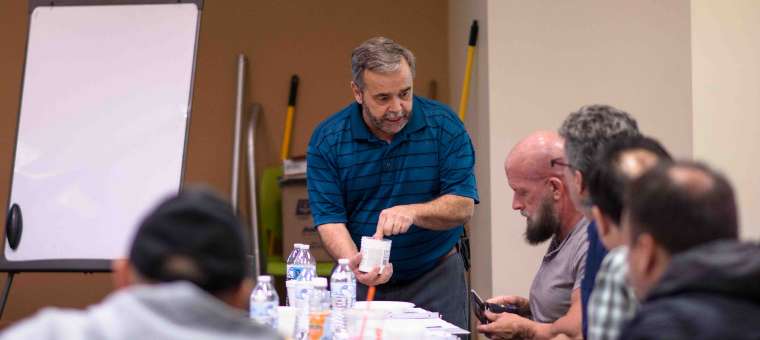How to Prepare Concrete Floors for Epoxy Coating
When people think of epoxy coatings, residential garages and auto showrooms come to mind. Epoxy coatings, however, are ideal for numerous applications including healthcare institutions, industrial settings, offices, and much more.
Decorative epoxy coatings come in an amazing variety of colors and styles, including solid color, metallic, quartz, and flake. Because of the endless design capabilities, no two floors are really ever the same.
Epoxies are durable, tough, and resistant to oil, grease, and most chemicals. They are also resistant to impact and extreme wear, making them ideal for locations with a lot of foot or vehicle traffic. Some epoxy coatings even provide added floor protection in environments subject to varying temperature extremes, such as commercial kitchens, refrigeration units, or deep-freeze coolers.
Epoxy coatings can also be designed with various surface textures and system build thicknesses. This provides multiple levels of slip resistance, making the environment safer and reducing the potential of slip-and-fall accidents.This is an attractive benefit for businesses concerned with employee and customer safety.
Concrete must be properly prepared before a coating can be applied. Epoxy coatings are also referred to as “epoxy paint.” And like any other paint job, proper preparation of the surface is essential.
Preparing a concrete floor (removing oil spots, cleaning/degreasing the floor, scrubbing, vacuuming, etc.) can be quite labor intensive. Applying the epoxy coating properly so as to avoid blistering, puckering, flaking, or other application errors is best done by a fully trained, professional concrete flooring contractor.
Before an epoxy coating is applied to the floor, Jon-Don highly recommends considering the following:
- New slabs of concrete should be allowed to fully cure for 30-60 days before a coating is applied
- If a sealer was previously used on the concrete (if water beads up on the surface), do not use epoxy. The sealer should be removed first by shot blasting.
- Previous coatings or paints should be removed before a new epoxy coating is applied.
- Any cracks or concrete spall should be filled and stabilized before a new epoxy coating is applied.
- Determine if moisture or dampness is coming up through the concrete from the ground. If moisture is evident, your floor isn’t suitable for epoxy. If relative humidity is greater than 75, a moisture migration system should be used.
Training Opportunity: Concrete flooring professionals who are new to the industry, or old pros looking to brush up on the latest techniques, would benefit from attending the Epoxy Flooring Skills Level 1 and Level 2 training courses. From start to finish, technicians will learn how to apply epoxy coatings step by step, and even how to perform simple crack repairs.
Need technical help or expert advice?
If you need assistance selecting products or troubleshooting issues with your concrete floor, please contact a Jon-Don Concrete Flooring Specialist at 800-400-9473. With decades of experience, our experts can offer advice on any job - from a small, one-car garage to a 500,000-square-foot warehouse. You can rely on the knowledge and expertise of the professionals at Jon-Don.



